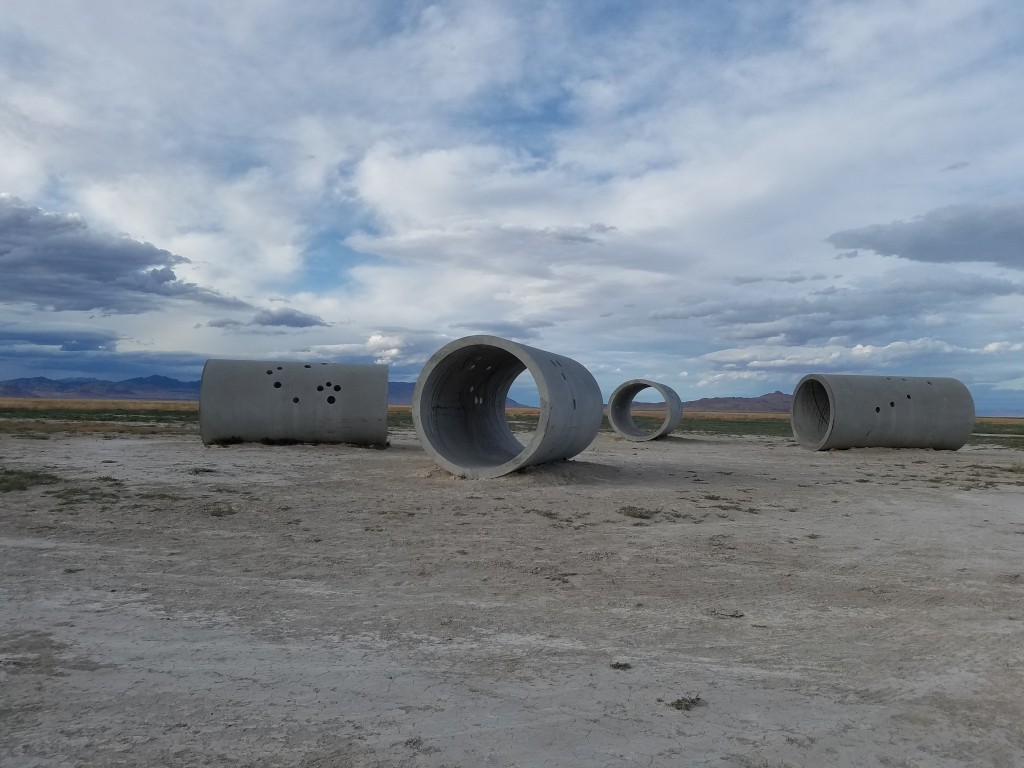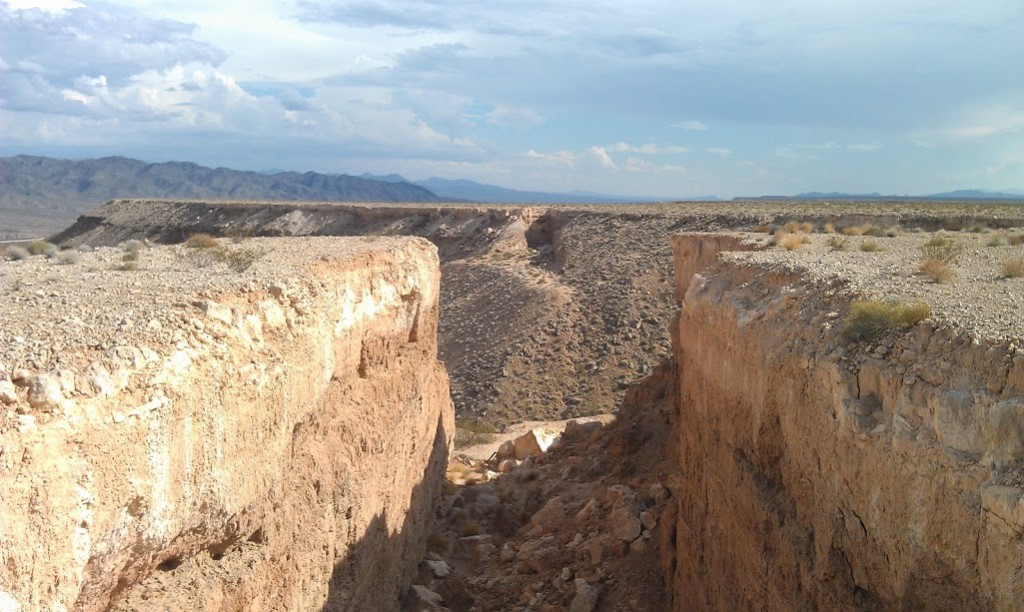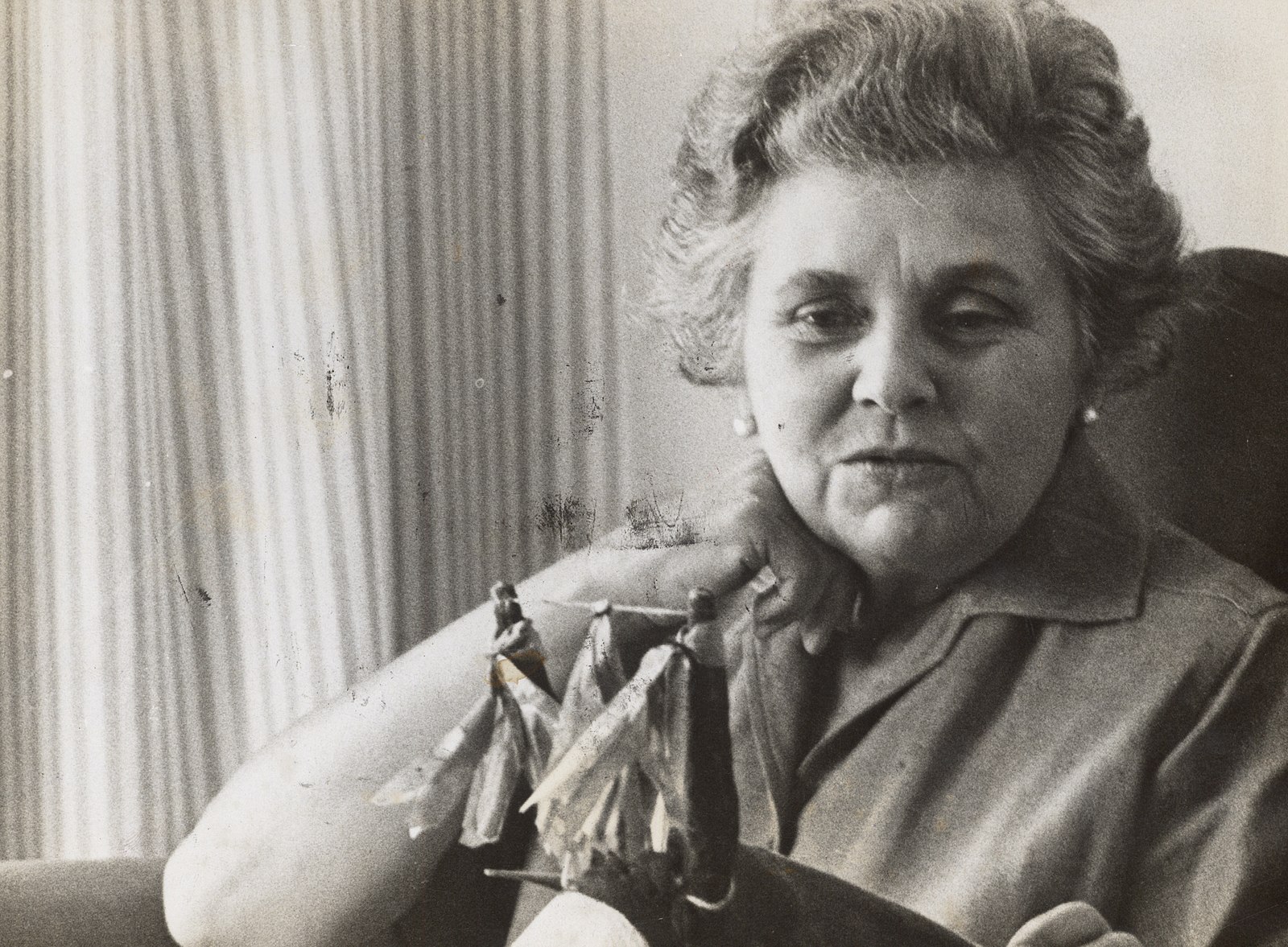In 1969, a young former abstract expressionist decided he was done with painting, went out to the middle of nowhere, set off explosives that displaced 244,000 tons of rocks, and made two 30×50-foot trenches that contained nothing.
That artist, Michael Heizer, was not the only one to name this kind of action “art.” That same year, Dennis Oppenheim dragged a broom through the snow to make Gallery Transplant. Robert Smithson poured hot asphalt down a quarry in Rome. Agnes Denes buried poems in a rice field. Hans Haacke buried himself in a series of photos entitled, fittingly, Self-Burial. They shared a common moniker, if not entirely a common cause: they were artists who had moved out of the gallery and museum system to make what came to be known as land art.
In our hyper-contextualized world of the tagged and displayed, relying upon “nothing” and “nowhere” as aesthetic constructs seems near dead. But there was a moment in American art in the late 1960s and mid-1970s that powerfully championed ephemerality, communality, and anti-materialism. They arrived at these shared philosophies of process from varying aesthetics and professional trajectories. Heizer, for example, was the son of a famous anthropologist; his family had lived in the Nevada desert, where he created Double Negative, since the 1800s. As a child, he accompanied his father on field work which took them from centuries-old Native burial mounds to newer sites, scarred by commerce and munitions. Perhaps it was this wide-open range he was thinking of when he wrote: “The museums and collections are stuffed, the floors sagging, but the real space still exists.”1
There is plenty to rightfully critique about land art. With a few remarkable exceptions, it was an overwhelmingly male-centric enterprise, as morbidly aggressive as it was naïve about gestural nuance. I think those critiques stand even if we are attentive to the dangers of presentism, which I am. And of course, anti-materialism and capitalism often end up bedfellows: today, no one gets into Roden Crater without a hefty donation, and Dia didn’t buy Earth Room for a handful of beads. But it’s my sense that Double Negative remains in the true spirit of land art: it’s open to anyone with the resources to make the trek. So that’s what I did. I went to see Double Negative for myself.
*
What I’m most attracted to in land art is that it insists its work is not to make A Landscape, but thinks of itself as the landscape—a physical testament to the idea that one cannot own what Julian Myers calls “the dream of an elsewhere.”2 Ideally, it has no entrance fee and keeps no hours. At Double Negative, there aren’t even actual directions to guide intrepid visitors; instead there near inscrutable instructions, like “Go to the top of the mesa and turn left at the cattle guard.” No museum houses it; there’s no guard, no gift shop, no wall label, no guide. My destination would be in a space past No.
Double Negative lies at the city limits of Overton, Nevada. My husband and I wound up through the empty streets of well-maintained houses to crawl a vertiginous road, the width of a horse and the incline of a roller coaster. After a half mile, the car righted itself onto a spectacular piece of land called the Mormon Mesa.
Mesas are a characteristic landform of arid environments: weaker rocks wear away and stronger ones remain standing, creating a flat, high area that resembles a huge table. No one lives on Mormon Mesa. There is nothing there. The view is likely unchanged in ten thousand years. Above, white canvas clouds hang in perfect mounds. Below is the entrance to 149,000 acres of slow-moving desert tortoise, quick hissing snakes, and creosote bursage scrub. It is impossibly quiet, because the wind takes every word away.
Outside the car the heat feels like a judgment, and lands everywhere. Walking on the mesa feels like walking on a moonscape. It occurs to me that I had unconsciously dressed entirely in black, as if I really was in a museum. I feel completely absurd.

*
Heizer was trained as a painter, but land art made him a sculptor. Because however revolutionary a project the land artists thought they were creating, that’s what land art is: sculpture. This isn’t so much about the physicality of sculpture—paintings are physical objects, too—but about how the fundamental painterly tools of hue and perspective are replaced by the fundamentally sculptural values of dimension and time.
The art historian Rosalind Krauss calls sculpture a medium “at the juncture between stillness and motion, time arrested and time passing.”3 And an interest in time was primary to the aesthetic of land art, which wanted to be at once ephemeral and epic, mythic and remote. Like sculpture, it is body-centric. In her landmark book Passages in Modern Sculpture, Krauss describes works where “the viewer’s movement as he walks around . . . endows these works with dramatic time.” Modernist painting, for example, could disavow figuration, but sculpture could never exactly disentangle itself from human form because there was always the body of the viewer, walking around it.
To get closer to the point: land art acts as a bridge between sculpture and performance art; the body of work enlists the body of the viewer. Double Negative may be just as still as a Rodin, and, as with a Rodin, I have to bring myself to it—but “bringing myself to it” is a far more dramatic enterprise, and, when I’m there, I’m an even more performative element than I would be in a museum—searching for it, walking around it, getting stinking hot.
I squint. My husband is pointing to something that looks like a landslide.
“That’s it.”
“That? Really? How do you know it’s not just nature?”
“Nature doesn’t cut a hill twice to make perfect facing valleys.”
*
The first noticeable thing is that this is an art that cannot be encompassed completely. I can’t back up far enough to take it all in. The only way to see the matching trenches and their valley in its entirety would be if I was that hawk over there making lazy circles over our head. In a sense, Double Negative can’t be seen at all.

We scramble down into one of the trenches. It’s been over four decades since Heizer made this work. Now, rubble fills sections of the shallows and wind has worn away the precision. Photos can show the size and placement but not the scent and texture of the work. Not the wind, and stillness; the heat and shadow. It is experiential; I exist inside and outside the work in an extraordinary position. I expected it to be a sensation, a question, of scale and grandeur; instead, I have an odd feeling of closeness, as though, out in this vast and indifferent beauty, I’m contained at the center of one person.
That’s a strange tension: land art meant to do away with the individual ego. Heizer’s monographer Germano Celant said that land art particularly eschewed the “narcissistic protagonism of the individual” abstract expressionism, among other forms, privileged and championed.4
Heizer and some of his compatriots felt they were in pursuit of a so-called genuinely American art form that would be democratic in its materials and universal in its methods. They rejected the modernists’ cult of personality by, among other things, demoting the whole criteria of skill. Donatello brilliantly sculpted David, but anyone who could pick up some rocks could make their own jetty. If we define the artist as a mark-maker, then land art thinks that lightning, water, the sun, the forces of entropy are artists.
*
We walked around in Double Negative for at most an hour. It was wonderfully strange to have nothing to touch—or, to put it another way, to be able to touch anything I liked. I threw rocks. I kicked dirt. I closed my eyes and baked in the sun. Yet I also believe I did Double Negative wrong.
I know that sounds strange. Art is not benign; it contains multitudes that include ideas of right and wrong. What was the point? That nothing had stuck to me and I had been nowhere?
When I walk the corridors of a museum I feel the conversation of history, but most land art is one remote work with nothing else in sight: the conversation has been silenced. In some ways, as much as I’m drawn to the ideals of land art, I felt I had been walking an empty grave.

My sense of my own wrongness found a kind of an answer this year when I went to visit a different piece of land art: Nancy Holt’s Sun Tunnels. A curator at the Utah Museum of Fine Arts, which owns the work, gave me advice about best ways to reach the site—the museum–non-museum distinction as well as the stricture on instruction, it turns out, are not as stark as I or land art always want it to be—and said to me, “You should stay as long as you can. Nancy meant people to engage.”
The Sun Tunnels are spectacularly durational. The longer you are in them, the more you see. To lie in the tunnels is to be informed about the frame of nature, the movement of nature and yourself, your own nature. Did Double Negative not invite this? Or did I just not recognize its invitation?
What kind of invitation lies beyond No?
—–
Merridawn Duckler is a poet and playwright from Portland, Oregon, recently in the Wigleaf Top 50 for work in The Offing. Her art essays have appeared in Ekphrastic Review, Contact Quarterly, “Adventures in Dance” (University Press of Florida), and Nerve Lantern. She was a finalist for the Sozoplo Fiction Fellowship and in non-fiction at Writers@Work. Her fellowships and awards include Yaddo, NEA, SLS in St. Petersburg, the Norman Mailer Center, and the Berta Anolic Fellowship in Jerusalem. She’s an editor at Narrative and the international philosophy journal Evental Aesthetics. Her text-based work at Blackfish Gallery includes a hand-reproduced version of Walter Benjamin’s “Art in the Age of Mechanical Reproduction.”
—–
1. Michael Heizer, “The Art of Michael Heizer,” Artforum, December 1969.↩
2. Philipp Kaiser and Miwon Kwon, “Ends of the Earth: Land Art to 1974” (Prestel Publishing, 2012).↩
3. Rosalind Krauss, “Passages in Modern Sculpture” (The Viking Press, 1977).↩
4. Germano Celant, “Michael Heizer” (Foundazione Prada, 1997).↩
—–
All photographs are the personal photography of the author.




